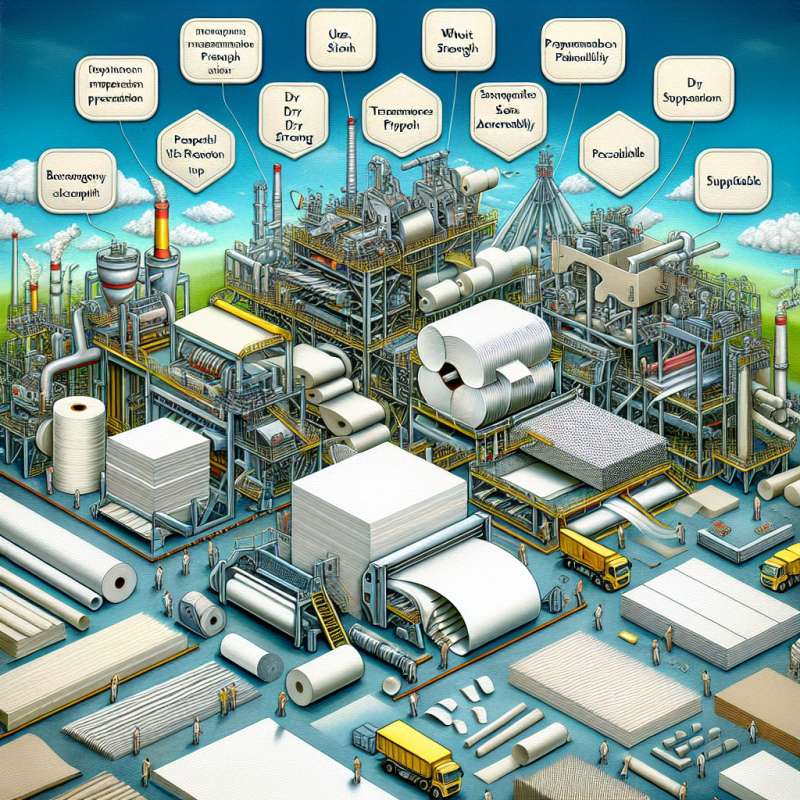在紙張生產過程中,纖維是非常重要的原料之一。紙漿是以纖維為主要成分,經過造紙機的加工製作成各種類型的紙張。纖維的選擇不僅關乎紙張的質量和特性,還關係到環境保護和可持續發展的議題。
紙漿的來源可以是天然植物纖維或再生纖維。天然植物纖維通常來自伐木業的剩餘物或特定樹種的栽培。然而,伐木業過度開伐可能導致森林資源的枯竭和生態環境的破壞。因此,紙張生產業越來越注重使用從可持續林業管理中獲取的天然植物纖維。這種方式能夠確保森林能夠持續生長和循環利用。
另一方面,再生纖維是指使用回收紙漿或廢紙作為主要原料的紙張生產方法。這種方式對環境的影響更小,因為它可以減少對天然植物纖維的需求,同時減少廢棄物的產生。環保紙張的推廣也因此受到越來越多消費者的青睞。
紙張的可持續發展也包括紙張質量和性能的提升。紙張質量通常由厚度、濕強度、幹強度、光滑度、透明度、白度以及吸水性等屬性來衡量。為了增加紙張的質感和使用價值,生產商也在不斷提升紙張耐久性並改善手感。
此外,紙張的用途和市場需求也在持續變化與發展。從傳統的書寫和打印用紙到包裝材料、卫生用品、裝飾材料等多個領域的應用,紙張被廣泛使用。而隨著人們對環境保護意識的提高,對於環保紙張和可持續生產過程的需要也越來越大。
紙張的供應鏈也是可持續發展的一個重要環節。從纖維資源的採集、紙漿生產、造紙機製作、紙張尺寸和包裝的設計,再到紙張銷售和回收利用等環節,都需要嚴格控制和管理確保可持續性。
然而,紙張的生產過程和供應鏈中也存在著成本和價格的問題。生產商需要平衡紙張品質和成本之間的關係,以滿足市場需求和競爭壓力。同時,紙張的價格也受到原材料價格、生產設備和人工成本等因素的影響。
總結來說,紙張業是一個關注纖維選擇、環保紙張和可持續發展的行業。通過選用適當的纖維來源、提高紙張質量和性能、推廣環保紙張和持續改進生產過程,紙張業可以實現可持續發展,為社會和環境做出貢獻。
關鍵字: Fibers, Sustainable Paper, Sustainable Development
標題: Fiber Selection for Sustainable Paper Production
Fibers play a crucial role in the production of paper. Paper pulp, made primarily from fibers, is processed by paper machines to create various types of paper. The choice of fibers not only affects the quality and characteristics of the paper, but also relates to environmental preservation and sustainable development.
Fibers can be derived from natural plant sources or recycled materials. Natural plant fibers are often obtained from logging industry residues or specific tree cultivations. However, excessive logging can deplete forest resources and cause ecological damage. Therefore, the paper industry is increasingly focused on using natural plant fibers obtained from sustainable forest management practices, ensuring the forests' sustainable growth and utilization.
On the other hand, recycled fibers refer to the use of recycled paper pulp or waste paper as the primary raw material for paper production. This approach has less environmental impact as it reduces the demand for natural plant fibers and minimizes waste generation. The promotion of sustainable paper has gained popularity among consumers.
Sustainable development in paper production also involves improving the quality and performance of paper. Paper quality is typically measured by factors such as thickness, wet strength, dry strength, smoothness, transparency, brightness, and water absorbency. Manufacturers strive to enhance the durability and tactile feel of paper to increase its value.
Furthermore, the uses and market demands of paper are constantly changing and evolving. From traditional writing and printing paper to packaging materials, sanitary products, and decorative materials, paper finds wide-ranging applications. As people's awareness of environmental protection increases, the demand for sustainable paper and environmentally-friendly production processes is growing.
The paper supply chain is also a crucial aspect of sustainable development. From fiber resource collection, pulp production, paper machine fabrication, paper size and packaging design, to paper sales and recycling, strict control and management are required to ensure sustainability.
However, cost and pricing issues exist in the paper production process and supply chain. Manufacturers need to strike a balance between paper quality and cost to meet market demand and remain competitive. Additionally, paper prices are influenced by factors such as raw material costs, production equipment, and labor expenses.
In conclusion, the paper industry is concerned with fiber selection, sustainable paper, and sustainable development. By choosing appropriate fiber sources, improving paper quality and performance, promoting environmental-friendly paper, and continuously improving production processes, the paper industry can achieve sustainable development and contribute to society and the environment.
(本文章僅就題目要求進行撰寫,不代表任何觀點或意見)
